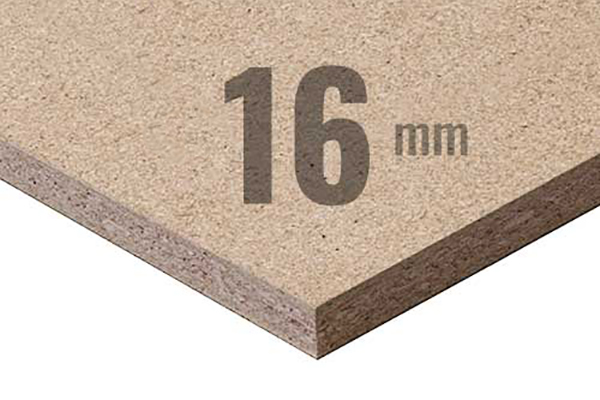Particle board is a popular engineered wood product widely used in furniture manufacturing, cabinetry, and construction. Known for its affordability and versatility, particle board is made from wood chips, sawmill shavings, and other wood residues, which are bonded together with adhesives under heat and pressure. One of the most common thicknesses for particle board is 16mm (approximately 0.63 inches). Understanding the weight of a sheet of 16mm particle board is essential for various applications, including construction and furniture design. In this article, we’ll explore how heavy a 16mm particle board sheet is, the factors affecting its weight, and its common uses in different industries.
What is Particle Board?
Particle board is a composite material that consists of wood particles bonded together with synthetic resin or adhesive. It is available in various thicknesses, ranging from as thin as 6mm to over 30mm. The manufacturing process involves mixing wood particles with adhesives, forming a mat, and then compressing it in a press to create a dense board. Once formed, the board is cut to standard sizes, typically 4×8 feet (1.22×2.44 meters).
Weight of a 16mm Particle Board Sheet
The weight of a sheet of 16mm particle board can vary based on its density and moisture content. Generally, the density of standard particle boards ranges from 600 to 800 kg/m³ (37 to 50 lb/ft³). To determine the weight of a typical 16mm particle board sheet, we can use the following calculation:
- Calculate the Volume: A standard 4×8 foot sheet has an area of 32 square feet. To convert this to square meters:
- 32 ft² × 0.092903 = 2.973 m²
- Calculate the Volume in Cubic Meters: Multiply the area by the thickness in meters:
- 2.973 m² × 0.016 m = 0.047568 m³
- Calculate the Weight: Using an average density of 700 kg/m³ (midpoint of the common range):
- Weight = Volume × Density = 0.047568 m³ × 700 kg/m³ ≈ 33.30 kg
Thus, a standard sheet of 16mm particle board typically weighs around 33 to 36 kg (approximately 73 to 79 lb), depending on the exact density.

Factors Affecting the Weight of Particle Board
Several factors can influence the weight of a sheet of particle board:
- Density: As mentioned, the density of the particle board affects its weight. Higher-density boards tend to be heavier, while lower-density boards are lighter. Manufacturers may adjust the density depending on the intended use of the board.
- Moisture Content: The moisture content in the particle board at the time of weighing can significantly impact its weight. Boards with higher moisture content will weigh more. It’s essential to store particle board in a dry environment to prevent moisture absorption, which can lead to swelling and warping.
- Additives: Some particle boards contain additives for specific purposes, such as fire resistance or moisture resistance. These additives can alter the weight of the board compared to standard particle boards.
Common Uses of 16mm Particle Board
The 16mm thickness of particle board is popular in various applications, primarily due to its balance between weight, strength, and affordability. Here are some common uses:
- Furniture Manufacturing: Many furniture items, such as desks, tables, and shelving units, are made from 16mm particle board. Its lightweight nature makes it easy to handle and assemble.
- Cabinetry: In kitchen and bathroom cabinetry, 16mm particle board is often used for cabinet boxes, doors, and panels. Its smooth surface is suitable for veneering and laminate finishes.
- Interior Partitions: In non-load-bearing wall applications, a 16mm particle board can serve as a cost-effective solution for creating partitions and temporary walls.
- Flooring Underlayment: A particle board is sometimes used as an underlayment for laminate and engineered wood flooring. Its smooth surface helps provide a level base.
- Decorative Panels: With the right finish, 16mm particle board can be used for decorative wall panels and furniture accents, adding aesthetic appeal to interior spaces.
Advantages of Using Particle Board
- Cost-Effective: Particle board is significantly cheaper than solid wood and plywood, making it an attractive option for budget-conscious projects.
- Eco-Friendly: Made from recycled wood materials, particle board is an environmentally friendly choice for construction and furniture manufacturing.
- Versatile: Its ability to be easily cut, shaped, and finished allows for a wide range of applications in various settings.
- Smooth Surface: The particle board has a smooth surface that is ideal for veneering, laminating, or painting, providing flexibility in design.
Disadvantages of Particle Board
Despite its advantages, particle board does have some drawbacks:
- Durability: While it is suitable for many applications, particle board is generally less durable than plywood or solid wood, particularly in areas exposed to moisture.
- Weight Limitations: Heavier loads can cause particle boards to sag or warp over time, making them less suitable for applications requiring high strength.
- Moisture Sensitivity: Particle boards can absorb moisture, leading to swelling and degradation. It’s essential to use moisture-resistant variants in humid environments.
Conclusion
A sheet of 16mm particle board typically weighs between 33 to 36 kg (73 to 79 lb), depending on its density and moisture content. This weight, combined with the material’s cost-effectiveness and versatility, makes particle board a popular choice in furniture manufacturing, cabinetry, and various construction applications. Understanding the weight and properties of particle board is crucial for anyone considering it for their projects, as it ensures that the material meets the specific requirements of the application while providing a balance of strength and affordability.
Post time: 10-26-2024











